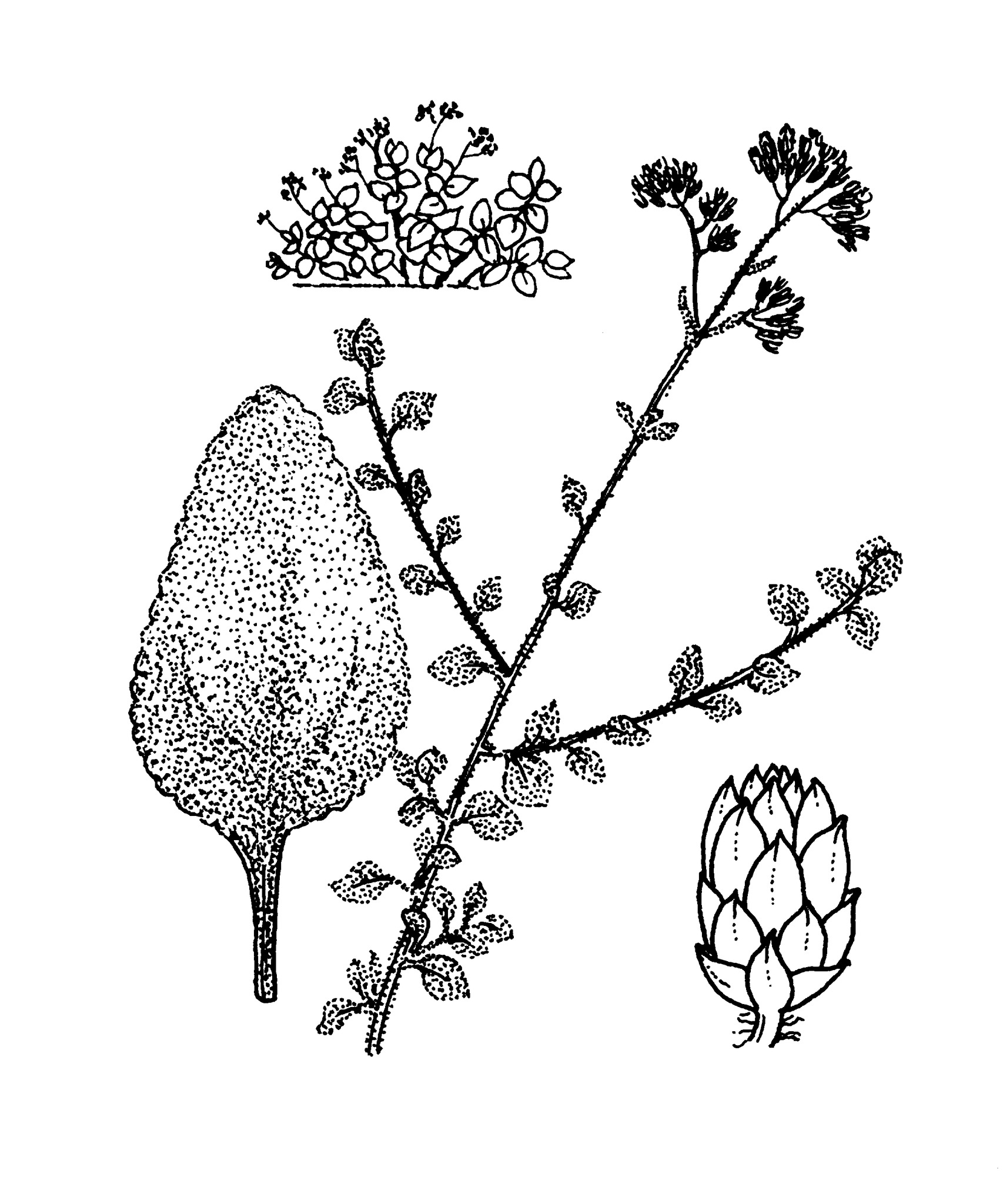
Greek helios — sun, chrysos — gold, an allusion to the golden yellow involucral bracts of some species.
Annual or perennial herbs or subshrubs, usually hairy. Stems usually erect. Leaves along stems, alternate, margins entire, sessile. Capitula diskoid or diskiform, terminal, solitary or in flat-topped corymbs, with stalks. Involucral bracts in few to many rows, overlapping, equal or unequal, often coloured. Receptacle sometimes hairy, flat or convex. Outer florets few or absent, female, tubular or filiform, yellow. Inner florets bisexual, tubular, yellow.achenes oblong, sparsely hairy. Pappus of feathery or barbed bristles.
Helichrysum in the strict sense does not occur naturally in Australasia, although many Australian and New Zealand species have historically been included in the genus. Several of these have recently been transferred to other genera (see Bracteantha, Chrysocephalum and Ozothamnus), but others are still awaiting transferral to new genera. In the meantime they are included here under Helichrysum for convenience.
The following Australasian species are occasionally grown as ornamentals: H. bellidioides (G. Forst.) Willd. from New Zealand, a prostrate herb with small round leaves, solitary capitula to 3 cm across and white involucral bracts; H. elatum A. Cunn. from Australia, an erect herb or shrub to 2 m tall with large broad leaves, solitary or clustered capitula to 4 cm across and white or pinkish involucral bracts; H. rutidolepis DC. from SE Australia, a decumbent herb to 40 cm tall with narrow leaves, solitary capitula to 1.5 cm across and yellow or brownish involucral bracts; and H. scorpioides Labill. from SE Australia, an erect or ascending herb to 50 cm tall with narrow leaves, solitary capitula to 3 cm across and yellowish involucral bracts.
Often colourful involucral bracts in many rows.
About 600 species, mostly from S Africa and Madagascar, also other parts of Africa, Europe and Asia.
Leistner (1983), Anderberg (1991).
Source: (2002). Dahlia. In: . Horticultural Flora of South-eastern Australia. Volume 4. Flowering plants. Dicotyledons. Part 3. The identification of garden and cultivated plants. University of New South Wales Press.
